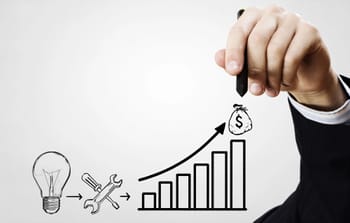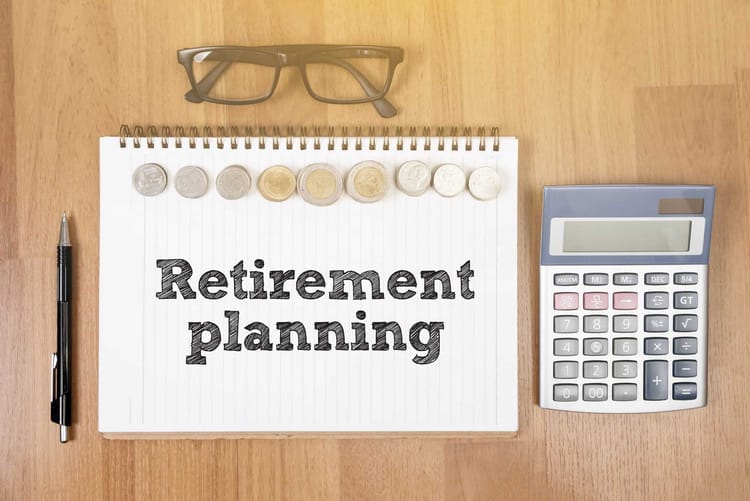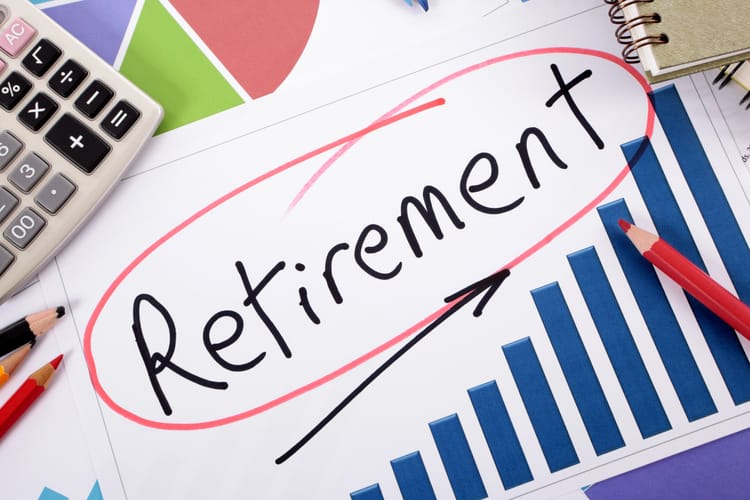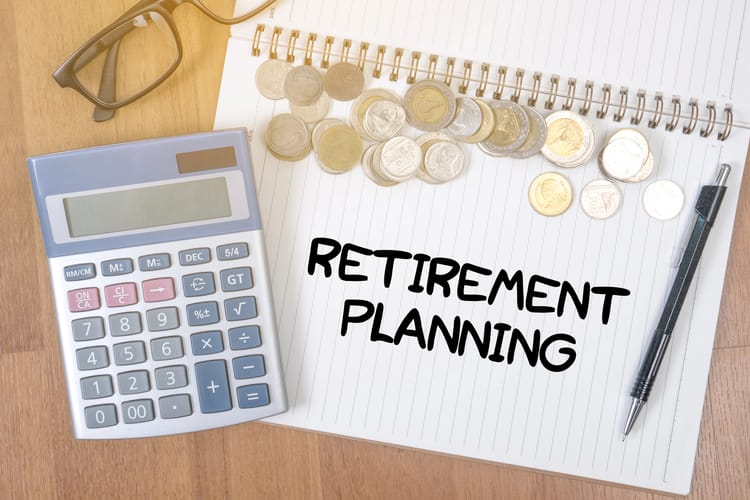One of the best ways to start your retirement planning is by investing. Retirement investments[1] are financial products that can help individuals save for this purpose and generate income in retirement.
This special article will help you to save for retirement and ensure that you have enough money to live comfortably in your later years, having better health due to lower levels of stress. Read it to:
- Determine how much to save on your retirement,
- Decide what investment account to use, and
- Learn useful tips and secrets to successful retirement investing.
Estimate Your Retirement Income
One of the most important things to do when it comes to retirement planning is to estimate your retirement income.
It requires understanding your current budget and applying various combinations of factors and formulas (such as social security, pension and other income sources). One of the most commonly used calculations is the 4% rule which requires estimating your current annual budget and targeting an annual withdrawal of 4% counting inflation every year [2].
Whichever basis you use for the estimation, one thing is for sure: retirement planning requires a lot of thought and scheduling. Therefore, it is crucial to have accurate information to start with to help you make the best decisions for your future and have a comfortable retirement.
Estimate your retirement income in advance
Determine How Much to Save
Successful retirement investing involves saving a sufficient amount of money each month. Determining how much to save for retirement depending on your individual situation, pay attention to various criteria, such as:
- Your age,
- Your desired retirement revenue per year,
- Current annual spending,
- Financial goals, and other factors.
However, the most important factor is your goals for retirement. If you want to retire as early as possible, you may need to save more money than if you plan to retire later in life.
Generally, it is recommended to save at least 15% of your income per year[3] or multiply your current annual spending by 25[4]. In order to help determine how much you need to save for retirement, you can also use an online retirement calculator[5] to reach your target investment number.
Furthermore, when investing during retirement, it is important to consider both the short- and long-term risks associated with each investment option. For example, have a retirement saving account that offers tax-deferred growth.
This means that your money will not be taxed when it is withdrawn from the account in retirement.
The purpose of tax-deferred retirement accounts[6] is to generate more money and income for retirement, as the growth of a tax-deferred investment will typically be greater than that of a taxable investment.
Decide What Investment Accounts to Use
When it comes to retirement planning, it's important for you to know where to invest for retirement income. There are a number of different options and a variety of accounts available to you.
They can be tax-advantaged accounts that include individual retirement accounts (IRAs) and other retirement savings plans — depending on your location, citizenship, residential status, etc.
It is important to choose an investment account that offers the best possible return and that is suitable for your financial situation. Furthermore, it is essential to understand the different features of each account before you invest.
For example, if we take the popular US options, IRAs offer tax-deferred growth, while 401(k)s offer employer contributions and other benefits.
In Europe, retirement investment plans vary by country. There are several types of retirement investment plans available and it can be divided into three Pillars, namely State pension plan, Occupational pension plan, and Private pension plan.
State pension plan
State pension[7] plan is a regular payment from the government for people who have reached the State Pension age. It depends on the person's birth dates and you can check it by using a calculator[8].
If you reached the State Pension Age on 6 April 2016 or after this date, you will be able to get the new State Pension rules. However, you will get the different amount if you reached the State Pension Age before this date. Therefore, you will follow the basic State Pension rules.
The amount of this State Pension could be more or less depending on your National Insurance records for at least 10 qualifying years[9], this includes National Insurance contributions you have paid when you were working and also getting National Insurance credits (e.g., sickness or unemployment).
Moreover, you will be able to claim your State Pension and keep working after you already reach the State Pension Age. In addition to this, you will not have to pay National Insurance.
Occupational pension plan
Occupational pension plan is a type of retirement investment plan that is arranged by your employer to let you save money for your retirement. It is also part of workplace pension schemes [10].
In this workplace pension plan, employers are required to make their employees part of the pension scheme and pay contributions on their behalf.
There are two occupational pension plans, including final salary schemes and money purchase schemes [11]. In final salary schemes or benefit schemes, your pension is based on a percentage of your earnings. It includes the amount of money you pay at retirement and how long you have been in this scheme.
On the other hand, in money purchase schemes or defined contribution schemes, you will get your pension according to the amount of money put in and on how long the investments have performed.
There are also other benefits from occupational pension plans, such as life insurance, pensions if you retire early, and pensions for your civil partner when you die.
Private pension plan
PEPP Pan-European Personal Pension Product[12] is a voluntary personal pension scheme that provides EU citizens a new option to retirement investment plan. PEPP is intended to be a simple and affordable way for individuals to invest and is part of the comprehensive system of the European Capital Markets Union.
These plans are designed to be accessible across the region and offer more flexibility than traditional 401(k) plans. These new European retirement savings plans do not offer members the opportunity [13] to select from a variety of funds.
When choosing the best retirement investment account you must:
- Research the different types of retirement accounts,
- Understand the features of each account, comparing the returns of different accounts, and
- Make sure that the account is suited to your financial situation and goals.
Tax-advantaged accounts
The main benefits of using a tax-advantaged account are that they offer significant savings over time, and can be a valuable way to save for retirement.
Tax-advantaged accounts also offer some important tax benefits, such as the ability to deduct contributions from your income taxes, and the potential for compound interest to help you grow your money over time.
Furthermore, tax-advantaged accounts are typically insured by the government, which can provide increased security for your money.
There are many types of tax-advantaged plans/accounts available in Europe, such as Estonian and Swedish ISKs (Investment Savings Accounts) and the UK's ISAs (Individual Savings Accounts) [14] which provide people to invest up to £15,240 per year with tax relief.
In Estonian Investment Savings Accounts [15], It enables the reinvestment of gains or income exempt from income tax received on financial assets and can be used to postpone the income tax payment.
Moreover, Swedish Investment Savings Accounts [16] are designed to make it easier to trade in financial instruments and allows investors to pay no capital gains tax on their transaction.
The UK's ISAs (Individual Savings Accounts) are tax-efficient savings and investment accounts. This allows individuals to save money each year in each type of ISAs and grow tax-free for as long as it remains in the account. The annual ISA allowance or the amount of money you can save and invest in ISAs is up to £20,000 a year. With an ISA, individuals do not pay tax on any interest earned or capital gains made from investments within the account.
However, there are some drawbacks to using tax-advantaged accounts for retirement investment. Among the core ones are:
- Limited access to funds,
- Minimal investment options, and
- Strict rules regarding withdrawals.
Choose a pension plan and account according to your circumstances
Taxable accounts
A taxable account is an investment brokerage account that allows you to save and invest money, but it may have taxes associated with it. For example, if you have a taxable account that is invested in stocks, you may have to pay taxes on the profits that you make from those investments.
Taxable accounts offer several advantages for you to investment during retirement, such as:
- Flexibility,
- The potential to minimize taxes with the right investments,
- No required minimum distributions, and
- Tax diversification.
Taxable investment accounts should be chosen when additional liquidity is needed, when saving more for retirement is desired, or when avoiding required minimum distributions in retirement is desired.
However, taxable accounts do not offer the same tax advantages as tax-advantaged accounts such as IRAs, which provide an upfront tax deduction and tax-deferred earnings growth.
Furthermore, taxable accounts also have several drawbacks for retirement investment, such as:
- No major tax breaks,
- Capital gains taxes,
- The potential to lose money, and
- The risk of being overwhelmed with choices.
Other Retirement Investment Plans
SEP IRA Plans
A SEP (Simplified Employee Pension) IRA plan is a type of retirement account that allows small businesses to save money for retirement. Contributions to SEP IRA [17] are tax-deductible: up to 25% of the employee's total compensation or a max. of $61,000 for the 2022 tax year or $66,000 for the 2023 tax year, whichever is less.
Simple IRA Plans
Contributions to a SIMPLE IRA plan [18] can be made by both employers and employees. In 2022, the Simple IRA Plan's contribution amount for people younger than 50 years old will be $14,000, while in 2023 that will be $15,500. People who are 50 years of age or more can contribute up to $3,000 to their IRAs.
Self-employed Pensions
Self-employed individuals in the European Union also have access to pension plans, such as voluntary private pension plans or personal pensions.
A personal pension is a type of defined contribution pension that every individual can save for retirement and also can set up for yourself outside of any workplace scheme. It offers a tax-efficient way to save for retirement. There are three different types of it: standard, stakeholder, and SIPPS (Self-invested Personal Pensions).
However, the self-employed are less often covered by private pensions than traditional employees. Therefore, the European Union is looking into ways to improve pensions for the self-employed, such as providing access to employer pension contributions and public pensions [19].
Automate Your Investments
There are a variety of ways to invest for retirement; therefore it requires careful planning and consideration of various options when automating your investment.
It is important to research each option carefully before making a decision, as each has its own risks and rewards. Moreover, it is also crucial to understand the different investments and retirement account options available, start saving and investing early, calculate your net worth, keep your emotions in check, and pay attention to fees.
There are also a number of ways to make your retirement investments easier. One option is to use a retirement account such as The UK's ISAs (Individual Savings Accounts) or for the US is a 401k and IRA.
Another option is to use a personal financial advisor. These advisors can help you choose the best investment options for your situation and help manage your portfolio accordingly.
What to invest in for retirement: build a diversified portfolio
Build a Diversified Portfolio
As you approach retirement, it's important to build a diversified portfolio that will provide you with the best possible chance of achieving your financial goals.
Building a diversified portfolio for retirement investing is also important to reduce risk and ensure that your investments are able to provide a steady flow of income. A diversified portfolio is one that contains a variety of different asset classes, such as stocks, bonds, and cash. This helps to lower risk by spreading investments across various sectors.
Stocks
Stocks are an essential part of a good retirement portfolio due to their potential to beat inflation over long periods.
Bonds
Bonds are another type of investment that can provide a steady stream of income over the course of a person's retirement.
Cash Investments
Cash investments include things like savings accounts and CDs. These investments are safe and easy to manage, but they don't offer the potential for high returns that some other types of investments do.
Other types of Investment to diversify your portfolio
Moreover, a well-diversified portfolio also includes some other types of investments for retirement. There are a variety of investments that can suit retirement, and it is crucial to be based on your own preferences and aims.
Annuities
Annuities are a type of investment that can provide a steady stream of income over the course of a person's retirement. Annuities are purchased by pension plans and other retirement funds, and they offer a number of benefits, including the potential for tax-deferred growth.
Annuities can be useful retirement planning tools, but they can also be expensive due to fees and early withdrawal penalties that make them somewhat illiquid.
Mutual Funds
Mutual funds are pools of money that are invested in a variety of different stocks, bonds, and other securities. Mutual funds typically charge fees, but they also offer the potential for high returns.
Exchange-Traded Funds (ETFs)
ETFs are baskets of stocks, and they offer investors the potential for high returns. ETFs are easy to invest in, and they are usually traded on stock exchanges.
Start Saving and Investing Early
How to invest for retirement if it is already near? It's important to start saving and investing early in order to have a secure retirement. It is beneficial as it allows access to a more diversified portfolio with higher risk, and higher reward investments.
There are a number of ways to do this, and one thing you can do is to start small and manage your savings. Here are some investment options for retirement:
Start saving at your first job
Many people start saving for retirement at their first job. This is because your employer may offer an occupational pension plan, which is a type of retirement savings plan that employers typically contribute more than employees.
If you are self-employed and don’t have access to an employer’s pension scheme, you can still contribute to a personal pension, such as SIPPS (Self-invested Personal Pensions) that allow you to manage retirement savings than other types of pensions.
Save with every paycheck
Another way to save for retirement is to start saving money every paycheck. You can set up a budget and track your spending to ensure you're saving enough per month.
Start investing early to be fully prepared for retirement on time
Pay Attention to Investment Fees
One of the most important aspects of retirement planning is ensuring that you are paying attention to investment fees. Investment fees can significantly impact your retirement income.
Some common fees associated with retirement investments include investment management fees, administrative fees, individual service fees, and mutual fund or ETF fees. It is important for investors to pay attention to investment fees in order to maximize their retirement savings and ensure they are getting the best return on their investments.
Get Help When You Need It
When it comes to retirement planning, many people may not know where to turn for help. One option is to get financial advice from a professional to help people make the best decisions for their retirement savings.
A financial advisor can also help determine if an individual's current investment strategy is meeting their goals and provide insight on how to improve it. Furthermore, they can also help decide if a retirement plan is on track and provide recommendations on how to increase savings.
However, using a financial advisor for a retirement plan sometimes needs more cost. Financial advisors typically charge fees for their services, which can be expensive and may not be worth the cost depending on the individual's financial situation.
In addition, not all advisors are competent, and choosing the wrong one could end up being costly in terms of time and money. Therefore, it is important for you to do research and compare different advisors before making a decision for investing in retirement.
So, there are a lot of things to do when preparing for your investment retirement and the retirement planning is an important step in securing a comfortable future. By understanding what to invest for retirement, having a plan for savings, and choosing the right investments, you can ensure a successful retirement.
Frequently Asked Questions
How to get started investing in retirement?
To start investing for retirement, it is important to check when you can retire and increase your pension. Moreover, you can also plan your retirement income and pension by researching more information about it and getting in touch with the right financial advisors to help your investment strategy.
Is there any safest retirement investment?
Some people prefer to have a mix of both stocks and bonds, while others prefer to focus entirely on stocks. There is no wrong answer – as long as you are aware of the risks and rewards associated with different types of investments, you can make an informed decision about which type of retirement investment is best for you.
What is the biggest risk in retirement investment?
The biggest risk in retirement investment is outliving your money as medical costs, market volatility, family issues, and Social Security changes can all contribute to this.
When should I invest in retirement?
Money experts recommend that people can start early with savings and investing for retirement at least 10% of their income [20]. The amount of money for investing after retirement will depend on the current financial situation.
List of References
- https://www.usbank.com/retirement-planning/financial-perspectives/investment-options-to-generate-retirement-income.html
- https://www.synchronybank.com/blog/ultimate-guide-to-retirement-calculations/
- https://www.troweprice.com/personal-investing/resources/insights/youre-age-35-50-or-60-how-much-should-you-have-by-now.html
- https://www.thebalancemoney.com/how-to-calculate-your-retirement-needs-4061547
- https://www.calculator.net/retirement-calculator.html
- https://www.alliancebernstein.com/insurance-services/subadvisory/resources/pdf/tax_deferral_piece.pdf
- https://www.gov.uk/plan-retirement-income/your-pension-options
- https://www.gov.uk/state-pension-age
- https://www.gov.uk/new-state-pension
- https://www.gov.uk/workplace-pensions
- https://www.citizensadvice.org.uk/debt-and-money/pensions/types-of-pension/workplace-pensions
- https://www.eiopa.europa.eu/browse/regulation-and-policy/pan-european-personal-pension-product-pepp_en
- https://www.ipe.com/europe-wont-go-401k-way/14398.article
- https://money.stackexchange.com/questions/47704/are-there-tax-advantaged-plans-accounts-in-europe-without-age-restriction
- https://www.emta.ee/en/private-client/taxes-and-payment/taxable-income/securities-and-investment-account
- https://www.catella.com/en/banking/private/wealth-management/asset-management/investment-savings-account#:~:text=An%20Investment%20Savings%20Account%20
- https://investor.vanguard.com/accounts-plans/small-business-retirement-plans/sep-ira
- https://www.irs.gov/retirement-plans/plan-sponsor/simple-ira-plan
- https://www.bruegel.org/sites/default/files/wp_attachments/PC-05-240322-1.pdf
- https://www.cnbc.com/2019/09/04/the-age-when-americans-start-saving-for-retirement.html






